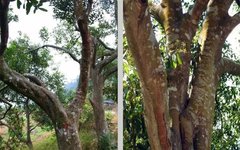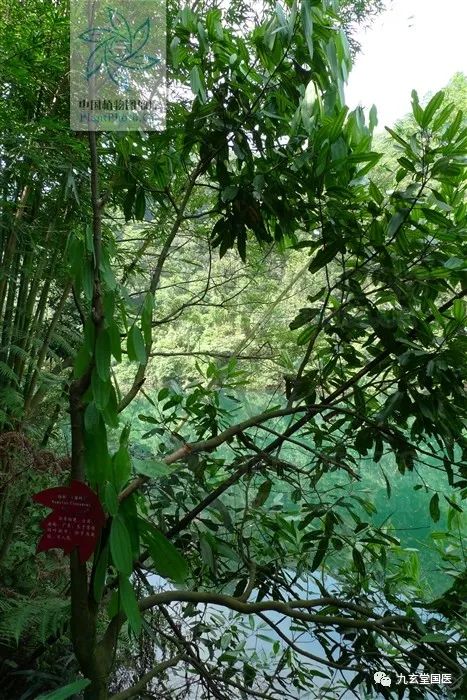
Alias:Gui (桂) (“Shennong’s Herbal Classic”), Zi Gui (紫桂) (“Discussion on Medicinal Properties”), Da Gui (大桂) (“Tang Materia Medica”), La Gui (辣桂) (“Renzhai’s Directives”), Gui Pi (桂皮) (“Herbal Compendium”), Yu Gui (玉桂) (“Herbal Origins”).
Ancient Texts Origin:Gui grows in Guiyang, while Mu Gui grows in the valleys of Nanhai. Harvested in February and August; the best quality comes from Guangzhou; those from Jiaozhou and Guizhou are smaller and fattier, also good; those from Xiangzhou, Shixing, and Guiyang are smaller and not as good as those from Guangzhou; currently, there is Gui Pi from Dongshan, which resembles it but has different leaves and can withstand winter, likely Mu Gui; known as Mu Gui, also called Da Gui; it is inferior to the small tender branch bark, which is thicker and half-rolled, with a wrinkled interior, its taste is spicy and sweet, also known as Rou Gui (肉桂), Gui Zhi (桂枝), or Gui Xin (桂心), sourced from Rongzhou, Guizhou, and Jiaozhou is of excellent quality. Guilin and Guiling are named after Gui, and it is still produced in this region. From the ridge south to the sea, there are Gui trees, with Liu and Xiangzhou being the most abundant.
Ancient Texts Origin:[“Bielu” states] Gui grows in Guiyang, while Mu Gui grows in the valleys of Nanhai. From the ridge south to the sea, there are Gui trees, with Liu and Xiangzhou being the most abundant.
Source of Medicinal Material:This product is the dried bark of the Cinnamomum cassia plant from the Lauraceae family.
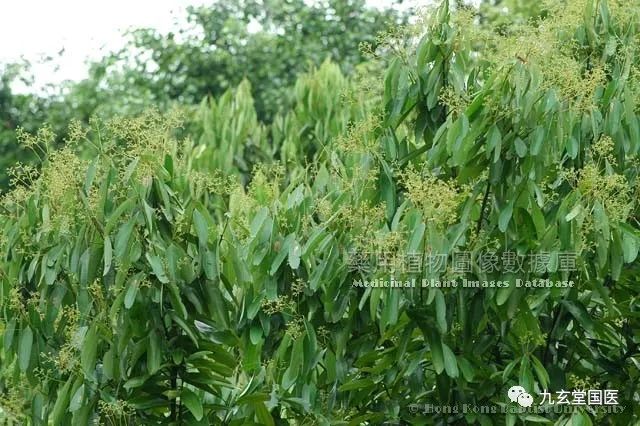
Original Morphology:Rou Gui is an evergreen tree, 12-17m tall. The bark is gray-brown and aromatic, with young branches slightly quadrangular. Leaves are alternate, leathery; elongated oval to nearly lanceolate, 8-17cm long, 3.5-6cm wide, pointed at the tip, blunt at the base, entire margin, green and glossy above, gray-green and covered with fine soft hairs below; with three prominent veins at the base, and fine veins parallel; petioles are robust, 1-2cm long. The inflorescence is a cone-shaped cluster, axillary or near the apex, 10-19cm long, covered with short soft hairs; flowers are small, about 3cm in diameter; pedicels are about 5mm long; the calyx tube is about 2mm long, with 6 lobes, yellow-green, oval, about 3mm long, densely covered with short soft hairs inside and outside; there are 9 stamens in 3 whorls, anthers are oval, 4-celled, with the outer 2 whorls of filaments without glands, the 3rd whorl facing outward, with 2 glands at the base of the filaments, and 1 whorl of degenerated stamens inside, the anthers are heart-shaped; the pistil is slightly shorter than the stamens, the ovary is oval, 1-celled, with 1 ovule, the style is slender, nearly equal in length to the ovary, and the stigma is slightly disc-shaped. The fruit is oval or obovate, slightly flattened at the tip, dark purple, about 12-13mm long, with persistent calyx. Seeds are elongated oval, purple. Flowering period is from May to July. Fruiting period lasts until February to March of the following year.
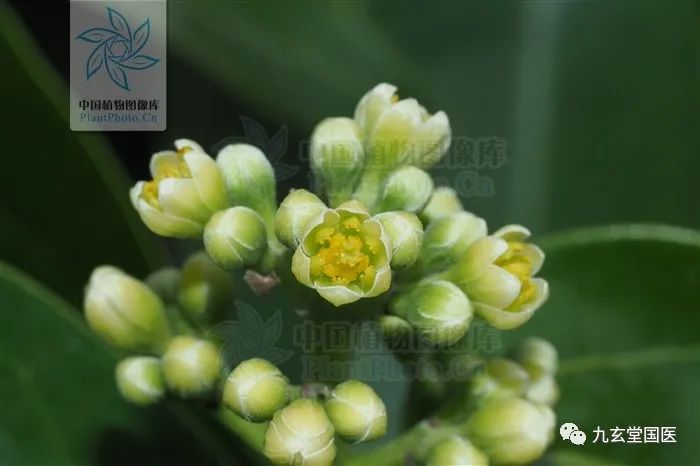
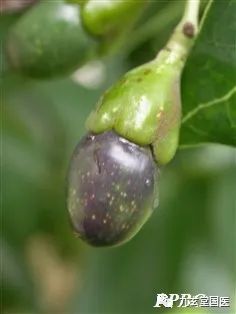
Habitat Distribution:Grows in evergreen broadleaf forests, but mostly cultivated in sandy soil and sloped mountainous areas.
Resource Distribution:Distributed in Fujian, Guangdong, Guangxi, Yunnan, etc. Mainly produced in Guangxi, Guangdong, and Yunnan, with Guangxi being the most cultivated, mostly in artificial pure forests.
Harvesting:Usually harvested in autumn, dried in the shade.
It is the dry bark and branch bark of the Cinnamomum cassia plant. Generally, from August to October, select the Gui tree, strip the bark at a certain width, and process it into different specifications, mainly including the following:
1. Guan Gui: Strip the bark from cultivated young trees aged 5-6 years and coarse branches, sun-dry for 1-2 days, and roll into cylindrical shapes, then dry in the shade.
2. Qi Bian Gui: Strip the dry bark from trees over ten years old, trim both ends evenly, and place it between wooden concave and convex boards to dry.
3. Ban Gui: Strip the dry bark from old Gui trees, make a circular incision 30cm above the ground, peel off the bark, place it in a Gui press to dry until 90% dry, then take it out, stack it crosswise, and press it; after about 1 month, it will be completely dry.
As for “Gui Xin”, it refers to the edge strips removed during the processing of Rou Gui, excluding the cork. All types of Rou Gui products should be stored in a dry, cool place, or in sealed tin boxes.
Cultivation:Prefers warm, humid climates with plenty of sunlight, and well-drained, fertile sandy loam, calcareous soil, or slightly acidic soil.
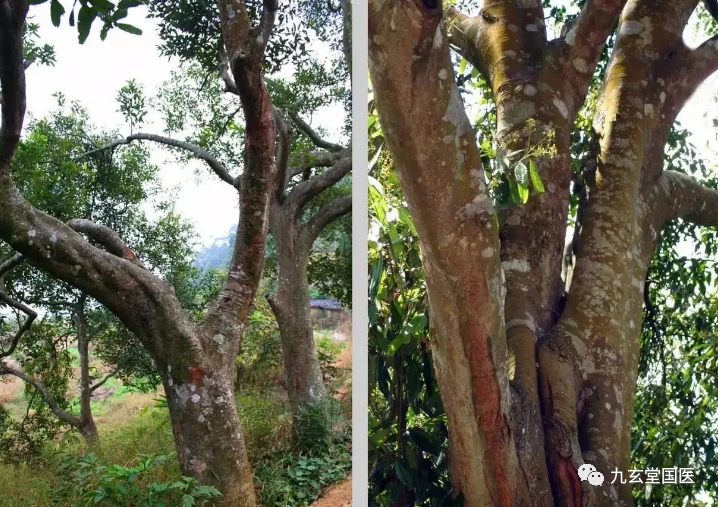
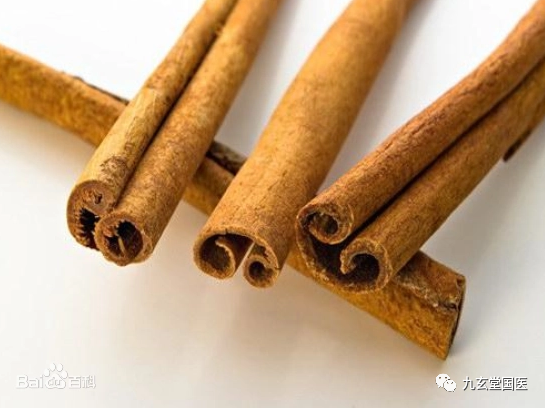
Identification of Properties:1. Guan Gui (《本草图经》)
Also known as: Jun Gui (菌桂) (“Shennong’s Herbal Classic” also refers to it as Jun Gui), Tong Gui (筒桂) (“Tang Materia Medica”), Gui Er Tong, Gui Tong, Tiao Gui. It is semi-grooved or cylindrical, about 40cm long, 1.5-3cm wide, with a thickness of 1-3mm. The outer surface is gray-brown, with fine wrinkles and small cracks, the bark pores are oval, occasionally with raised horizontal lines and gray spots; when the cork is scraped off, the surface is smoother, reddish-brown, commonly referred to as “Gui Xin”. The inner surface is dark red-brown, granular. It is hard and brittle, with a purple-red or brown-red cross-section, showing light-colored stone cell clusters, and the fracture lines are circular. It has a fragrant aroma and a sweet-spicy taste.
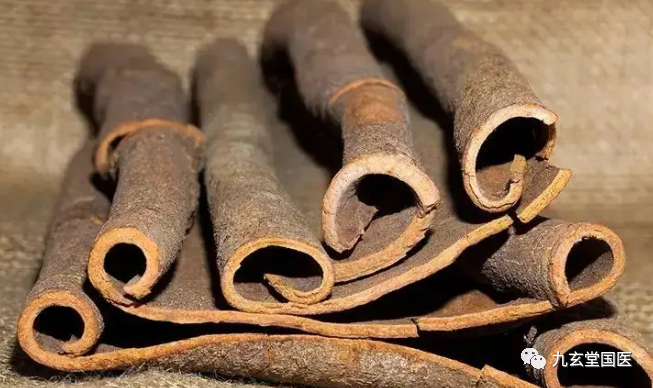
2. Qi Bian Gui
Also known as: Qinghua Gui. It is long and flat, with both sides curling inward, and the center slightly concave, 40-50cm long, 4.5-6cm wide, and 3-6mm thick. The outer surface is gray-brown, and the inner surface is red-brown, showing brown oily patterns when scratched with a fingernail. The aroma is strong, and other characteristics are similar to Guan Gui.
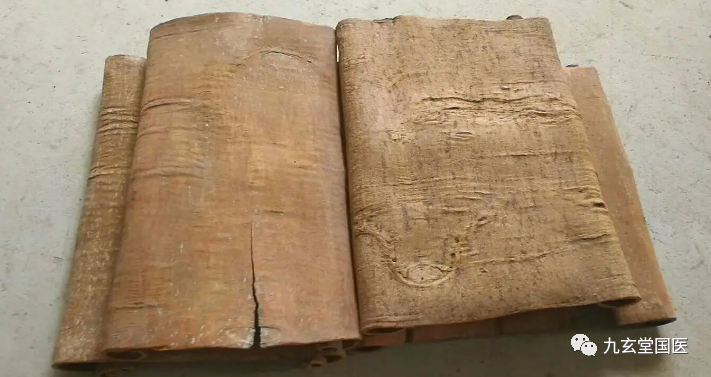
3. Ban Gui (《本草图经》)
Also known as: Gui Nan. It is in a flat sheet form, usually 30-40cm long, 5-12cm wide, and about 4mm thick, with rough ends.
All of the above are best when the bark is fine and the flesh is thick, with a purple-red cross-section, high oil content, strong aroma, sweet and slightly spicy taste, and no residue when chewed.
Pharmacological Effects:This product has cardiotonic, sedative, choleretic, anti-inflammatory, analgesic, antibacterial, antipyretic, antioxidant, anti-ulcer, anti-hypoxia, vasodilatory, anti-thrombotic, improves sexual function, and protects adrenal cortex function.
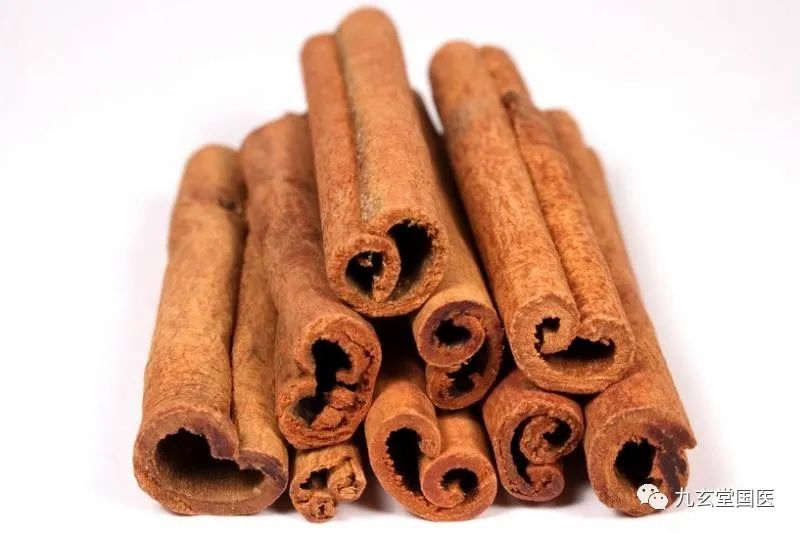
Processing:Remove impurities and coarse bark. Crush before use. Alternatively, scrape off the coarse bark, soak in warm water for a moment, slice, and dry.
Taste and Properties:Spicy, sweet, very warm
Meridian Affinity:Kidney, Spleen, Heart, Liver meridians
Main Functions and Indications:Supplement fire and assist yang, guide fire back to its source, disperse cold and relieve pain, invigorate blood and regulate menstruation. Used for impotence, cold uterus, cold pain in the lower back and knees, kidney deficiency causing asthma, yang deficiency dizziness, red eyes and sore throat, cold pain in the heart and abdomen, deficiency cold vomiting and diarrhea, cold hernia, running piglet syndrome, amenorrhea, dysmenorrhea.
Dosage:1-4.5g.
Precautions:Use with caution in those with bleeding tendencies and pregnant women; not suitable to use with Chi Shi Zhi (赤石脂).
Various Schools of Thought:
1. “Shennong’s Herbal Classic”: Main treatment for cough with qi counterflow, phlegm obstruction in the throat, benefits joints, tonifies middle and boosts qi.
2. “Bielu”: Main treatment for heart pain, wind in the flank, flank pain, warms muscles, opens meridians, stops restlessness and sweating. Main treatment for warming the middle, benefiting liver and lung qi, cold and heat in the heart and abdomen, cholera, cramping, headache, lower back pain, stops salivation, cough, nasal congestion; can induce abortion, strengthen bones and joints, open blood vessels, and rectify insufficiency; promotes the efficacy of all medicines, fearless of any.
3. “Discussion on Medicinal Properties”: Main treatment for nine types of heart pain, kills three worms, breaks blood, opens menstruation, treats soft feet, bi syndrome, numbness, retained placenta, relieves cough with counterflow, phlegm obstruction, stops unbearable abdominal cold pain, treats diarrhea, nasal polyps. Kills plant and wood toxins.
4. “Zhonghua Zibencao”: Treats all wind conditions, tonifies five labors and seven injuries, opens nine orifices, benefits joints, nourishes essence, brightens eyes, warms lower back and knees, breaks phlegm, eliminates blood stasis, treats wind bi and joint contraction, reconnects tendons and bones, promotes muscle growth.
5. “Zhenzhu Nang”: Expels wind evil from the exterior, treats lower abdominal pain in autumn and winter.
6. “Yixue Qiyuan”: Tonifies the lower jiao deficiency, treats persistent cold and chronic cold with exterior deficiency sweating. “Main Treatment Secret”: Drains and stops thirst.
7. “Yongyao Xinfang”: Disperses cold evil, treats running piglet syndrome.
8. Wang Haogu: Tonifies the deficiency of the Mingmen, benefits fire and dispels yin.
9. “Gangmu”: Treats cold bi, wind obstruction, excess yin leading to blood loss, diarrhea, convulsions, treats yang deficiency leading to blood loss, internal abscesses, can draw blood to transform sweat and pus, detoxifies snake venom.
10. “Tangye Bencao”: Various types of Gui are distinguished by their size and age. … The “Herbal Classic” mentions a slight toxicity, which is also classified; when used with Huangqin (黄芩) and Huanglian (黄连), the slight toxicity is mitigated; when used with Wu (乌) and Fu (附), it is entirely heat-inducing; if used with toxic substances, the slight toxicity becomes significant; when used with Ren Shen (人参), Mai Men Dong (麦门冬), and Gan Cao (甘草), it can tonify the middle and boost qi, thus can be taken for a long time. It is known that this medicine can protect the nourishing qi and solidify the defensive qi, thus it is in the foot Taiyang meridian, while Gui Xin enters the hand Shaoyin meridian. If referring to the nourishing character, it is a blood medicine, hence the “Classic” states it opens blood vessels. If used with toxic substances like Ba Dou (巴豆), Nao Sha (硇砂), Gan Qi (干漆), Chuan Shan Jia (川山甲), Shui Zhi (水蛭), and Meng Chong (虻虫), the slight toxicity transforms into significant toxicity. This classification is evident.
Compatibility:
1. Rou Gui with Fu Zi: Rou Gui is spicy and sweet, very warm, with functions of dispersing cold, opening meridians, and tonifying fire and assisting yang; Fu Zi is spicy and very warm, with functions of dispersing cold, relieving pain, and tonifying fire and assisting yang. The combination enhances the effects of dispersing cold, relieving pain, and tonifying fire and assisting yang, suitable for treating kidney yang deficiency, severe internal cold, and spleen and kidney yang deficiency.
2. Combined with Cang Zhu to dry dampness and clear heat, cool blood and stop bleeding, mainly treating damp-heat in the spleen channel, dysentery with blood.
3. Combined with Huai Jiao to cool blood and stop bleeding. Combined with Qian Cao to cool blood and stop bleeding, treating blood in stool caused by damp-heat in the lower jiao.
4. Combined with Wu Mei to cool blood and astringe the intestines. Combined with Huang Bai to cool blood and dry dampness.
5. Combined with Jin Yin Hua to enhance the cooling blood and stopping bleeding effect.
6. Warms and tonifies kidney yang; insufficient kidney yang can lead to male impotence, cold essence, and women not conceiving for a long time. Men often combine with Lu Rong (鹿茸), Shu Di Huang (熟地), Tu Si Zi (菟丝子), Gou Qi Zi (枸杞子), Tong Ji Li (潼蒺藜), Shan Yao (山药), Fu Zi, Rou Gui, Ba Jiao Tian (巴戟天), and Fu Ling (茯苓), Ze Xie (泽泻), etc. Women often combine with Dang Gui (当归), Shu Di (熟地), Bai Shao (白芍), Chuan Xiong (川芎), Xiang Fu (香附), Sheng Ai Ye (生艾叶), Fu Zi, Zi Shi Ying (紫石英), Wu Yu (吴萸), Wu Yao (乌药), etc. Kidney yang deficiency can also lead to urinary difficulties, even causing edema, and can be combined with Shu Di and Shan Yao.
7. Warms the middle and expels cold, for abdominal pain, bloating, lower abdominal cold pain, cold hernia, dysmenorrhea caused by cold air; can be combined with Gao Liang Jiang (高良姜), Xiang Fu, Wu Yu, Xiao Hui Xiang (小茴香), Wu Yao, Ding Xiang (丁香), Chen Xiang (沉香), etc. Spleen and kidney yang deficiency affects the middle jiao’s transportation, leading to deficiency-cold diarrhea, with clear and thin stools, even undigested food; can be combined with Dang Shen (党参), Bai Zhu, Fu Ling, Zhi Gan Cao (炙甘草), Gan Jiang (干姜), Fu Zi, Bu Guo Zhi (补骨脂), Rou Dou Kou (肉豆蔻), He Zi (诃子), Wu Wei Zi (五味子), etc.
Attached Formulas::
1. For kidney qi deficiency, lower jiao cold, abdominal pain, frequent urination at night, weak knees, fatigue, dark complexion, loss of appetite; foot qi rising, numbness in the lower abdomen; deficiency labor, thirst, heavy lower back pain, urgent lower abdomen, urinary difficulties; male diabetes with frequent urination; female menstrual issues, urinary retention, etc.: Mu Dan Pi (牡丹皮), Bai Fu Ling (白茯苓), Ze Xie (泽泻) each 3 liang, Shu Di Huang (熟干地黄) 8 liang, Shan Zhu Yu (山茱萸), Shan Yao (山药) each 4 liang, Fu Zi (炮,去皮、脐), Rou Gui (去粗皮) each 2 liang. Grind into powder, make honey pills the size of a wutong seed. Take 15-25 pills with warm wine before meals, twice daily. (“Jufang” Eight Flavor Pill, also known as “Jinkui” Kidney Qi Pill)
2. For insufficient yuan yang, declining Mingmen fire, spleen and stomach deficiency cold, reduced appetite, or vomiting, bloating; or stomach upset, or fear of cold, or abdominal pain, or loose stools, frequent diarrhea, or urinary incontinence, running piglet syndrome, or cold invading the valleys causing joint pain, or cold in the lower jiao causing water retention, and true yang deficiency leading to fatigue, palpitations, weakness, and infertility: Da Huai Shu Di 8 liang, Shan Yao (炒) 4 liang, Shan Zhu Yu (微炒) 3 liang, Gou Qi (微炒) 4 liang, Lu Jiao Jiao (炒珠) 4 liang, Tu Si Zi (制) 4 liang, Du Zhong (姜汤炒) 4 liang, Dang Gui 3 liang (do not use if loose stools), Rou Gui 2 liang (can gradually increase to 4 liang), Zhi Fu Zi 2 liang (can gradually increase to 5-6 liang). First, steam Shu Di until soft, pound into a paste, make honey pills the size of a ball, chew 2-3 pills, and take with hot white soup. (“Jingyue Quanshu” You Gui Pill)
3. For summer heat and hidden heat, excessive drinking leading to dampness in the spleen and stomach, failure to distinguish clear from turbid, yin and yang qi counterflow, cholera, vomiting, and disordered organs: Gan Cao (锉,长寸) 30 jin, Gan Jiang (炮炒) 4 jin, Xing Ren (去皮、尖,砂炒) 4 jin 4 liang, Rou Gui (去粗皮,炙) 4 jin. First, stir-fry Gan Cao with white sand until 80% yellow, then add Gan Jiang and stir-fry until the ginger cracks, then add Xing Ren and stir-fry until it stops making noise, sift and clean, then add Gui and pound into powder. Take 2 qian, decoct until 7 parts, remove residue, and take warm. If restless, can mix with Jinghua water, or take with boiling water. (“Jufang” Dajiao San. Note: The method and dosage of Gan Jiang and Xing Ren are originally missing, according to “Pujifang” citing San Yi Decoction for supplementation)
4. For cold qi attacking the heart and abdomen, frequent vomiting, loss of appetite: Gui Xin 1 liang, Gao Liang Jiang 1 liang (锉), Dang Gui 1 liang (锉,微炒), Cao Dou Kou 1.5 liang (去皮), Hou Po 2 liang (去粗皮,涂生姜汁(炒)令香熟), Ren Shen 1 liang (去芦头). Grind and sift into powder, take 3 qian with 1 medium cup of water, decoct until 6 parts, remove residue, and take warm at any time. (“Sheng Hui Fang” Gui Xin San)
5. For prolonged cold accumulation, abdominal pain, flank distension, diarrhea, intestinal sounds, spontaneous sweating, undigested food: Bi Ba, Rou Gui each 4 jin, Gan Jiang (炮), Gao Liang Jiang each 6 jin. Grind into fine powder, boil with flour paste to make pills the size of a wutong seed. Take 20 pills with rice soup before meals. (“Jufang” Daji Han Wan)
6. For nine types of heart pain, obstruction: Gui Xin 0.5 liang. Grind into powder, take with 1 cup of wine, decoct until half a cup, remove residue, and take warm. (“Sheng Hui Fang”)
7. For prolonged diarrhea and water retention: Gui (去粗皮), Fu Zi (炮裂,去皮、脐), Gan Jiang (炮), Chi Shi Zhi each 1 liang. Grind into powder, make honey pills the size of a wutong seed, take 20 pills with rice soup before meals, three times daily. (“Sheng Ji Zong Lu” Gui Fu Wan)
8. For cold hernia causing heart and abdominal pain: Gui Xin 4 liang, Sheng Jiang 3 liang, Wu Zhu Yu 2 liang. Cut into pieces, use 1 large sheng of wine, decoct until 3 cups, remove residue, divide into three warm doses, take after walking 6-7 miles. Avoid raw scallions. (“Yao Seng Tan’s Collected Proven Formulas” Zhu Xin Tang)
9. For running piglet syndrome and hernia: Rou Gui, Gan Jiang, Xiao Hui Xiang each 5 qian, Mu Dan Pi, Mu Xiang, Bing Lang each 2 qian, Gan Cao 5 fen; decoct in water. (“Fang Mai Zheng Zong”)
10. For true cold lower back pain, tight pulse, blue tongue, contracted scrotum, body shivering: Nei Gui 3 qian, Fu Zi 3-4 qian (use raw Fu Zi in emergencies), Du Zhong 2 qian, take warm. (“Hui Yue Yi Jing” Gui Fu Du Zhong Tang)
11. For postpartum abdominal masses and pain: Gui (末), take with warm wine, 1 tablespoon, three times daily. (“Zhou Hou Fang”)
12. For postpartum residual cold, diarrhea with pus and blood, frequent bowel movements, abdominal pain with occasional blood: Gui Xin, Gan Cao each 2 liang, Bai Mi 1 sheng, Gan Jiang 2 liang, Dang Gui 3 liang, Chi Shi Zhi 10 liang (wrapped in cotton), Fu Zi 1 liang (炮,去皮,破). Combine the seven ingredients, boil with 6 sheng of water to obtain 3 sheng, add honey, boil again, and divide into three doses. (“Qian Jin Yi Fang” Gui Xin Tang)
13. For children’s diarrhea with red and white stools, abdominal pain, and loss of appetite: Gui Xin, Huang Lian in equal parts. Grind into powder, make white paste pills the size of a small bean, take 30 pills with rice soup. (“Pujifang” Gui Lian Wan)
14. For children’s nocturnal enuresis, unaware: Guan Gui (grind into powder), rooster liver one piece, equal parts. Mash, make pills the size of green beans, take with warm soup, three times daily. (“Wan Bing Hui Chun” Gui Gan Wan)
15. For wind-heat, bone sores, and all yin sores: Shu Di 1 liang, Rou Gui 1 qian (去粗皮,研粉), Ma Huang 5 fen, Lu Jiao Jiao 3 qian, Bai Jie Zi 2 qian, Jiang Tan 5 fen, Sheng Gan Cao 1 qian. Decoction for oral administration. (“Wai Ke Quan Sheng Ji” Yang He Tang)
16. For injuries from beating, with stasis in the abdomen: Gui Xin, Dang Gui each 2 liang, Pu Huang 1 sheng. Combine the three ingredients, filter, and take with wine, 1 tablespoon, three times daily. (“Qian Jin Fang”)
17. For psoriasis: Guan Gui, Liang Jiang, Xi Xin each 5 fen, Ban Mao 10 pieces (crushed). Soak in 3 liang of white wine for seven days, shaking once a day to extract effective components, filter to obtain clear juice, and to moderate the local irritation of white wine, add 30ml of glycerin. First, wash the affected area with warm water to soften, then apply the medicinal liquid, once daily or every other day. Avoid alcohol and spicy foods. (“Chinese Medicine Bulletin” 1:10, 1957)
18. For throat pain and throat obstruction due to deficiency-cold yin fire: Rou Gui, Gan Jiang, Gan Cao each 5 fen. Grind finely, steep in boiling water, place the bowl in boiling water, steep again, and swallow slowly. First, dip a goose feather in tung oil, insert it into the throat to roll out phlegm, and taking the medicine will be more effective.

